
The Association of Esan Professionals, the pre-eminent socio-economic group in Edo State in Nigeria’s South-South
geo-political zone has decided to explore Esan Cultural Values and Practices as a way of developing powerful and
creative ideas for economic development and economic empowerment in Esanland.
Culture is the totality of the experience and technology of a people. It is the ways we think, act and the material
objects that together form our way of life. Culture is our past, our present and the guide to our future.
The Esan people are well reputed as hardworking, innovative, peace-loving, God-fearing and fun-loving people. The roots
of these behaviors and attributes were laid in Esan traditions and rich cultural heritage
In 2013, the AEP conducted a cultural excursion to all kingdoms in Esanland. Marriage & Bride Price, Taboos, Naming and
Burial Ceremonies, Divorce were the cultural variables studied.
In 2015, AEP under the leadership of Rt. Hon Barrister Matthew Egbadon commissioned the second phase of investigation
into Esan culture.
The 2015 research team investigated the traditional Kingship Institution, Dance, Festivals, Cultural Places and Heritage
Centres, Language, Age Grades, Fashion, Architecture, Chieftaincy investiture, Women Groups, traditional healthcare,
commerce, etc.
Esan kings ensure societal order and good governance. Historically, the children of the Oba of Benin at the time were
sent to rule the present-day Esanland, Obuluku and Ughelli.
Kingship in Esanland is usually the hereditary system, except the rotational kingship in Idoa and Ukhun which is
attributed to the Fulani war coupled with the rift that was caused by the premature death of the then Onojie.
The duty of the Onojie is to administer over his people with the support of his council of Chiefs and Elders of the
town. He ensures there is peace and harmony in the town.
A female cannot be crowned Onojie in Esanland, because out of the numerous King’s wives there must be a male child to
bear the crown. However, in a case where the Onojie has no male heir before his transition, the late Onojie’s younger
brother will take the stool.

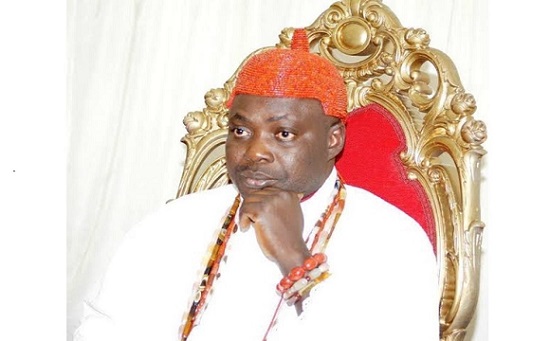
The Onojie of Ekpoma

The Onojie of Uromi
Esan kings ensure societal order and good governance. Historically, the children of the Oba of Benin at the time were
sent to rule the present-day Esanland, Obuluku and Ughelli.
Kingship in Esanland is usually the hereditary system, except the rotational kingship in Idoa and Ukhun which is
attributed to the Fulani war coupled with the rift that was caused by the premature death of the then Onojie.

The duty of the Onojie is to administer over his people with the support of his council of Chiefs and Elders of the town. He ensures there is peace and harmony in the town.

The Onojie of Ekpoma
A female cannot be crowned Onojie in Esanland, because out of the numerous King’s wives there must be a male child to bear the crown. However, in a case where the Onojie has no male heir before his transition, the late Onojie’s younger brother will take the stool.

The Onojie of Uromi

The Council of Chiefs is a major pillar in the administration of the community. The chiefs derive their influence from the throne and exercise authority on behalf of the monarch in the settlement of disputes and execution of instructions or orders issued by the Onojie.
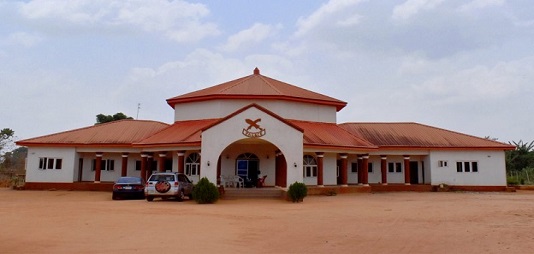
Palace of the Onojie of Ubiaja
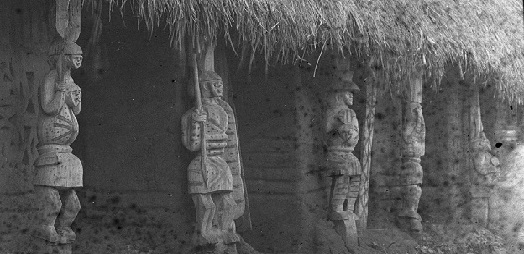
A Shrine
In Esanland, there are cultural places with great significance to the community. These cultural places are meant only for use by initiated individuals, groups or persons qualified by position and status. One of such places is the “Okoughele” or the traditional parliament Okoughele is an organized place by the community where elders and all other age grades of the town meet to talk about progress and development of the community. Okoughele is known as Oguedion in Ujogba There are various levels of age groups from Egbonughele to Enedion who make use of the Okoughele.

Palace of the Onojie of Ubiaja
The Enedion sit inside
Okoughele while Ighene and Egbonughele sits outside accordingly. The Ewaemhin (Parliamentary messengers) relate the
decisions of the Enedion to other groups outside.
Other cultural places in Esanland include Onojie’s Palace, Museum and shrines.

A Shrine
There are various shrines in Esanland with devotees evenly distributed among gender. These shrines reflect the traditional religious beliefs of the people. Shrine is a conflict resolution centre where through traditional divination, disputes are settled. Though there is no building called museum in his kingdom, the cultural artefacts are well preservedFestivals are an integral part of Esan culture. Esan people are hardworking and engaged mostly in agriculture or commerce. Festive periods provide the opportunity to unwind, visit family and friends and engage in merriment. Esan festivals include Ihuen or Ihulan, Ukpe, Utun, Idumuamukpe, Ukpeze, Iruen among others. Festivals usually mark a season, celebrate great personalities or moments in history. The Ukpeze festival is tied to the origin of Ewohimi people. Many years ago, the Oba of Benin sent the Ezomon to install the Onojie of Ewohimi. Unfortunately, the Ezomon died in Ewohimi in the line of duty. In his remembrance, the Ewohimi people instituted Ukpeze. Iduamukpe festival is a unique festival celebrated with native beans called Ikpakpa and that it is set aside to pay homage to the first son by his younger siblings. Ihuan festival in Ekpoma brings together every son and daughter of Ekpoma, the world over, every February or March.

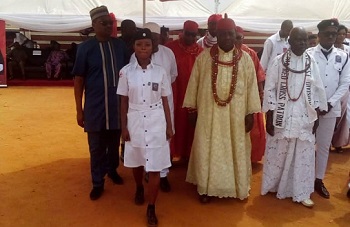
Onojie of Ekpoma at the Ihuen Festival

Ogwa Annual Festival
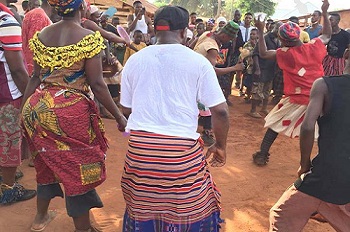
Ogwa Festival

Festivals are an integral part of Esan culture. Esan people are hardworking and engaged mostly in agriculture or commerce. Festive periods provide the opportunity to unwind, visit family and friends and engage in merriment. Esan festivals include Ihuen or Ihulan, Ukpe, Utun, Idumuamukpe, Ukpeze, Iruen among others. Festivals usually mark a season, celebrate great personalities or moments in history.

Onojie of Ekpoma at the Ihuen Festival
The Ukpeze festival is tied to the origin of Ewohimi people. Many years ago, the Oba of Benin sent the Ezomon to install the Onojie of Ewohimi. Unfortunately, the Ezomon died in Ewohimi in the line of duty. In his remembrance, the Ewohimi people instituted Ukpeze.

Ogwa Annual Festival
Iduamukpe festival is a unique festival celebrated with native beans called Ikpakpa and that it is set aside to pay homage to the first son by his younger siblings. Ihuan festival in Ekpoma brings together every son and daughter of Ekpoma, the world over, every February or March.

Ogwa Festival

Without a doubt, the Igbabonelimin dance is the greatest international cultural export of Esanland and has today assumed a major identity of the Esan people. However, there are other prominent dances in Esanland which add colour and pomp to various festivities The structure of the Igbabonelimin dance group is made of dancers, drummers and singers. The name Igbabonelinhim is derived from the mystical nature of the masquerade. The Ijeleghe dance is of Ikeke-ihiala Usugbeun, Irrua. The Olekhe dance, also known as Egwu-Uku or Ikhilen-Akun by Ekpon people, is the famous waist dance in Esan land. Olekhe dance has been described as a blend of Esan Asongun and Ika dance. The origin of Asonogun dance was attributed to a certain man called Ogun who had long delay in child bearing and when he eventually gave birth, the community erupted in a huge jubilation, joy, happiness and the dance was choreographed to express their job for Ogun’s good fortune. Ikhinabojie is another popular dance in Esanland particularly in Iruekpen Ekpoma. The dance is performed by energetic young men and women.
The Esan Igbulu is arguably the only type found anywhere in the World. It’s curious to observe that Esan people may have taken a variant of the Edo language, but created an ingenious fashion style to underscore their identity. Ewohimi is noted for Igbulu weaving in Esan land. The Izakpa is a complementary fashion worn on Igbulu or Agbada by Esan eminent persons. Izakpa is made of animal skin. It is note-worthy that the Izakpa is not mere cosmetic but has spiritual significance. The Akpono (beads) is commonly used by the young girls and women during occasions. The use of Ere (Native Chalk) as make-up signifies joy, especially the arrival of a new baby in the home




The Esan Igbulu is arguably the only type found anywhere in the World.
It’s curious to observe that Esan
people may have taken a variant of the Edo language, but created an ingenious fashion style to underscore their identity.
Ewohimi is noted for Igbulu weaving in Esan land.

The Izakpa is a complementary fashion worn on Igbulu or Agbada by Esan eminent persons. Izakpa is made of
animal skin.
It is note-worthy that the Izakpa is not mere cosmetic but has spiritual significance.
The Akpono (beads) is commonly used by the young girls and women during occasions. The use of Ere (Native
Chalk) as
make-up signifies joy, especially the arrival of a new baby in the home

Marriage also known as matrimony is a socially or ritually recognized union or legal marriage contract between two
individuals that establish obligations and rights between them and their children and in-laws.
The concept of marriage is not a new practice and it has been a part of our society since ancient times.
Traditional marriage is usually an arrangement between two families as opposed to an arrangement between two
individuals.
Accordingly, there is mutual requirement from the bride and bridegroom to make the marriage work as any problem will usually affect both families and strain the otherwise cordial relationship between them.
The man usually pays the bride-price as he is considered the head of the family.



Marriage also known as matrimony is a socially or ritually recognized union or legal marriage contract
between two
individuals that establish obligations and rights between them and their children and in-laws.
The concept of marriage is not a new practice and it has been a part of our society since ancient times.
Traditional marriage is usually an arrangement between two families as opposed to an arrangement between two
individuals.
Accordingly, there is mutual requirement from the bride and bridegroom to make the marriage work as any problem will usually affect both families and strain the otherwise cordial relationship between them.
The man usually pays the bride-price as he is considered the head of the family.
